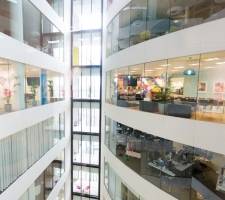January 15, 2015
Discrimination concerns inhibit LGBT people from being ‘out’ at work
LGBT (lesbian, gay, bisexual and transgender) people are worried about harassment from colleagues or being passed over for promotion if they come out at work; and while two thirds of people are out at work in the Netherlands less than half are prepared to divulge their sexual orientation at work in the UK. These are the initial findings in a global study to prove the importance of implementing effective policies to support LGBT people at work. “LGBT Diversity: Show Me The Business Case” by business consulting firm Out Now measures the financial savings companies can make by encouraging people to be open at work about their sexual orientation or gender diversity. The report is drawn from an analysis of Out Now’s LGBT2020, a global research initiative involving more than 100,000 LGBT people worldwide.










 A report published at the end of December
A report published at the end of December BBC Wales has exchanged contracts with the developer of its new 150,000 sq. ft headquarters in the centre of Cardiff. Although still subject to final planning consent and the approval of BBC executives, the building is an anchor site in the Foster + Partners masterplanned Central Square regeneration project and work is confidently expected to begin in the middle of 2015 for completion in 2017 with full occupancy expected the following year. The new building will be home to some 1,000 staff and has been targeted to achieve a BREEAM excellent rating. Developers Rightacres expect the Central Square mixed use project to provide around 1 million sq. ft of office, residential and retail space, creating one of Wales’ largest property developments and regeneration schemes in the heart of Cardiff on the site of the current bus station.
BBC Wales has exchanged contracts with the developer of its new 150,000 sq. ft headquarters in the centre of Cardiff. Although still subject to final planning consent and the approval of BBC executives, the building is an anchor site in the Foster + Partners masterplanned Central Square regeneration project and work is confidently expected to begin in the middle of 2015 for completion in 2017 with full occupancy expected the following year. The new building will be home to some 1,000 staff and has been targeted to achieve a BREEAM excellent rating. Developers Rightacres expect the Central Square mixed use project to provide around 1 million sq. ft of office, residential and retail space, creating one of Wales’ largest property developments and regeneration schemes in the heart of Cardiff on the site of the current bus station.












January 9, 2015
O2’s dogmatic approach to flexible working sends the wrong signals
by Mark Eltringham • Comment, Flexible working, Technology, Workplace design
(more…)